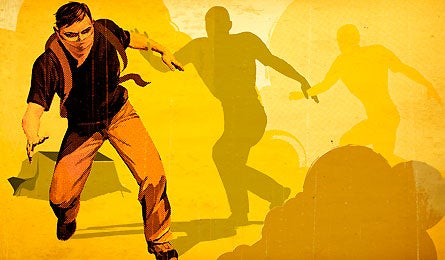Travel Like a Pro: For the Extreme Traveler

'Illustration by Tavis Coburn'
Hot: Brazilian Amazon, Sahara Desert
- Make like the locals and take a break midday, when the sun is hottest. Set up your tent fly like a tarp for shelter, or chill under a shady tree.
- Replace fluids and electrolytes lost in sweat by sipping at least one liter of water or sports drink (we like NUUN) per hour.
- Eat smaller, more frequent meals, and avoid alcohol and caffeine.
- Wear light-colored clothing that reflects heat and a wide-brimmed sun hat. In the rainforest, keep clothes dry by packing them in zip-top bags.
Cold: Antarctica
- Keep extremities warm by swinging arms and legs to force blood into your fingers and toes, and pack chemical hand- and foot-warmers.
- Don’t forget to drink; you’re losing more fluid through respiration and sweat in the cold than you realize. Use wide-mouth bottles and store them upside-down inside insulating sleeves so the tops won’t freeze over.
- Bump up your calorie intake by at least 25 percent on a cold-weather trip–more if you’re doing strenuous hiking or skiing. Have a snack high in unsaturated fat, such as peanut butter, before bed to keep your metabolism fired up.
High Altitude: Everest Base Camp, Aconcagua
- Stoves can get balky in cold, low-oxygen locales. With multifuel stoves, like MSR’s XGK ($125, msrgear.com) or the Brunton Vapor ($225, brunton.com), release pressure from your bottle by unscrewing the cap, screwing it back, repressurizing with the pump, then lighting it. Ditch the windscreen to let in more oxygen. With canister stoves, (we like the MSR Reactor; $140, msrgear.com), warm fuel in your sleeping bag or a pocket, then put the canister in a shallow container of water while cooking.
- Take a day or two to acclimatize over 8,000 feet. Take a rest day at 10,000 feet, and again for every 3,000 feet gained. A safe trek up 20,320-foot Mt. McKinley takes 12 to 14 days.
- Pace yourself–you should be able to talk and hike–and take a 10-minute break every hour.
Survive This: Adventure Edition
Intestinal pathogens
When in developing countries, all water is suspect–including the ice in that pisco sour–so stick to bottled or purified water. Too late? Best to ride it out, but over-the-counter Imodium can help. Drink an oral rehydration solution (such as Pedialyte) to replace lost fluids. For bad diarrhea, upgrade to an antibiotic, advises Dr. Christopher Sanford, author of The Adventurous Traveler’s Guide to Health. “But if there’s a fever, blood in the stool, or it’s lasting more than a few days, you should see a doctor.” Heading far off the beaten path? Bring a prescription antiprotozoal agent like tinidazole or nitazoxanide in case antibiotics don’t cure you: It could be Giardia or cryptosporidium.
Animal attack
When trekking on safari in Africa, travel with a group, make noise, and always sleep in a shelter. Never get between the territorial hippo and its water source. If a lion charges, stand your ground or even run toward the cat. “It’s a frightening thing to do, but it’s your best chance for survival,” says Kota Tabuchi, Africa program director for Mountain Travel Sobek.
Sandstorm
Middle Eastern deserts are prone to swirling maelstroms of grit and sand. If you’re caught in one, wet a bandana and wrap it over your nose and mouth, link arms with other travelers, and move to higher ground–sandstorms often swirl in the lowest points of land. And don’t panic; you won’t be buried any deeper than your legs.